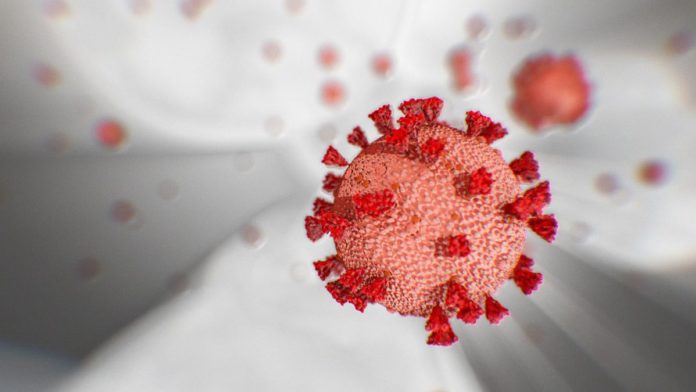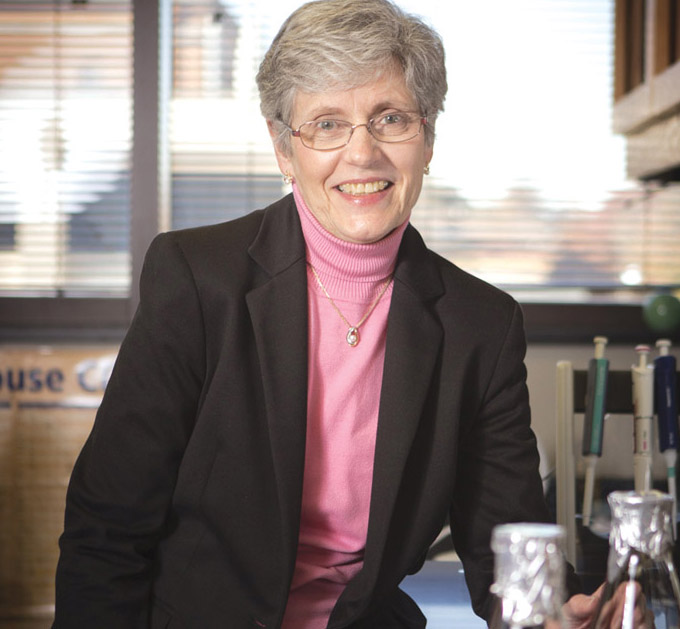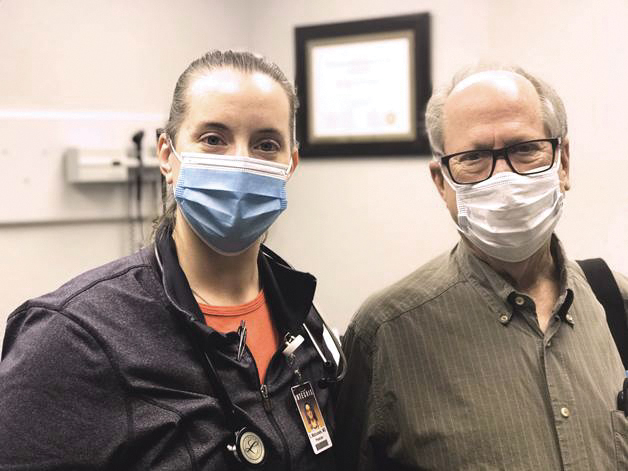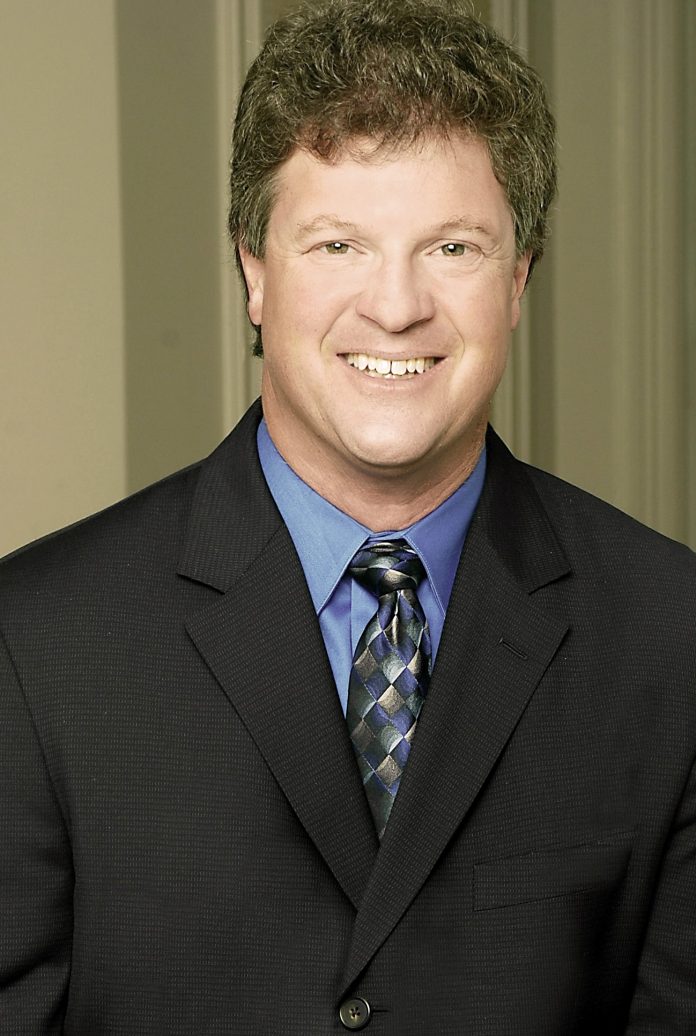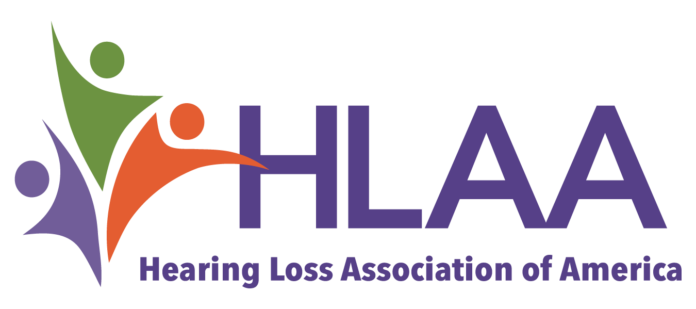is once again recognized as the #1 hospital in the state and the #1 hospital in the Oklahoma City metro area by U.S. News & World Report. The 2020-21 rankings were just released to the public today.
INTEGRIS was the sole recipient to be named the Best Hospital in Central Oklahoma and the Best Hospital in the Oklahoma City Metro area, but we share the distinction of the Best Hospital in Oklahoma with St. Francis Hospital in Tulsa.
INTEGRIS Baptist Medical Center was recognized as High Performing in five different adult procedures and conditions including colon cancer surgery, heart failure, abdominal aortic aneurysm repair, aortic value surgery and chronic obstructive pulmonary disease (COPD).
The annual U.S. News rankings are widely reported and are designed to assist patients and their doctors in making informed decisions about where to receive care. We take great pride in the fact that we have earned this honor multiple times and appreciate the continued acknowledgment and support from the communities we serve.
U.S. News & World Report Names INTEGRIS Baptist Best Hospital in the State and OKC Metro
HEALTH: A battle that never ends
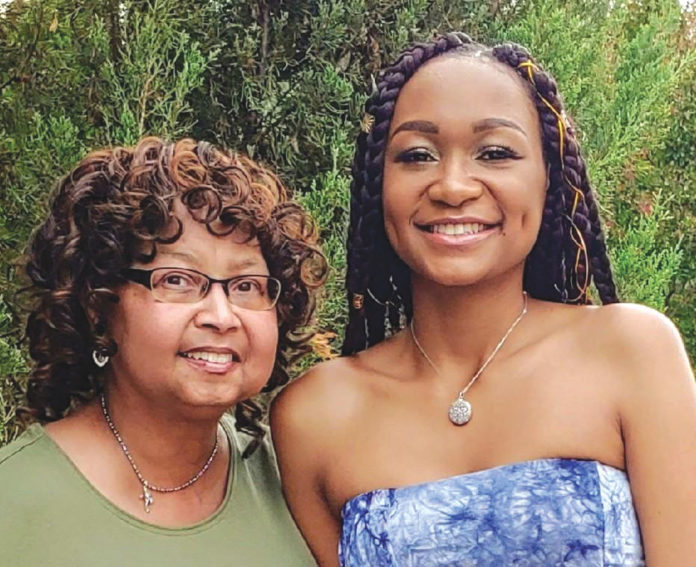
For most people, sunshine and warming temperatures serve as welcome heralds of summer. But for Renita Lewis, they can trigger life-threatening disease flares.
“People say, ‘You look too good to be sick,’” said Lewis, 51, of Midwest City. But Lewis, a nurse, suffers from lupus, an autoimmune illness that strikes African Americans like her at disproportionate rates.
Lupus occurs when the immune system becomes unbalanced, leading to the development of antibodies and chronic inflammation that damage the body’s organs and tissues. Sufferers experience periodic disease flares, affecting organs that can include the kidneys, lungs, skin and joints, as well as the cardiovascular system.
According to the Lupus Foundation of America, more than 1.5 million Americans suffer from the disease. Studies have found that it strikes African Americans at roughly five times the rate it affects European Americans.
“We still have a great deal to learn about why African-American women are at greater risk of lupus and at greater risk for major organ damage and early death from lupus than other races,” said Oklahoma Medical Research Foundation Vice President of Research Judith James, M.D., Ph.D.
“We have investigators who are working on genetic and genomic factors, as well as our work which has focused on differences in the body’s major defense system—the immune system. In all likelihood, it’s probably a complicated combination of these factors, and we will keep working until we figure this out.”
Lewis’ first symptoms appeared when she was in her 20s: aching muscles, swollen fingers, skin rashes. But she wasn’t diagnosed until a decade later, by which time she also suffered from shortness of breath, fatigue, asthma, stomach issues and inflammation around her heart. “I don’t have kidney problems, but pretty much every other one of my organs is affected,” she said.
She began daily doses of prednisone, hydroxychloroquine, aspirin and anti-inflammatory medications to control her symptom. Still, over time, lupus has exacted an increasing toll on her body. In March, after a bout of pericarditis—swelling of the membrane surrounding her heart—hospitalized her, she was forced to take short-term disability until she’s well enough to return to work.
For more than a decade, physicians and clinical staff at OMRF, which has been named 1 of only 10 of the nation’s Autoimmunity Centers of Excellence by the National Institutes of Health, have helped Lewis manage her condition. “They’re on the cutting edge of research, especially on autoimmune disease, and they really care about me and want me to have as normal a life as possible,” Lewis said.
As a lupus patient and a healthcare professional, Lewis is happy to participate in research studies on the disease at OMRF. “By donating blood and taking part in studies, I hope I can help researchers develop new treatments,” she said. If scientists are able to understand why it exacts such a heavy toll on African Americans, she said, “That would be a total game-changer.”
In a study published in May in the Journal of Allergy and Clinical Immunology, an OMRF research team led by James moved closer to answering this question.
The scientists found that African Americans with certain risk factors for lupus had elevated activation levels in T cells, which are known to be important in lupus. Meanwhile, European Americans with similar risk factors did not. That may be a reason at-risk African Americans are more likely to develop the disease, said OMRF’s Samantha Slight-Webb, Ph.D., lead author on the study. And the findings could prove key to helping allay the suffering of patients like Lewis.
“Identifying this protective T-cell response could be pivotal in identifying therapeutic targets and potential drugs that may prevent people from transitioning into the disease,” said Slight-Webb. “It would also help us look at drugs—and dosages—differently based on ethnicity to improve outcomes for African-American patients, who are at highest risk for severe disease.”
Lewis would welcome any findings that could help improve her quality of life. Still, she’s more interested in developments that could benefit her daughter, Taraya, 19.
Lewis’ only child, Taraya previously tested positive for antinuclear antibodies, or ANA, an indicator of lupus activity. Taraya also has several relatives on her father’s side with the disease. “So, when she says she doesn’t feel good, I worry,” said Lewis.
Like all mothers, Lewis wants more than anything to protect her child. “If researchers could find a way to prevent lupus from starting, that would be a dream,” she said. “I never want my daughter to go through this.”
For information on treatment or participating in one of OMRF’s studies or trials, please call (405) 271-7745 or email clinic@omrf.org.
Cancer During COVID-19: The Ticking Time Bomb
Pat Basu, MD, President, Cancer Treatment Centers of America
COVID-19’s impact goes far beyond the illness itself. Our lives have changed drastically in an effort to get the virus under control and ultimately “flatten the curve”. However, there is yet another curve that needs our urgent attention – a ticking time bomb that is currently flying under the radar: the cancer “Shadow Curve.”
The pandemic has caused far too many people to skip treatments and miss routine cancer screenings. And while delaying scans or treatments may have felt like the most prudent action three months ago, evidence predicts that a few years from now, we may look back and wish we had taken a different approach.
The National Cancer Institute states that annual cancer screening is one of the most effective ways to detect and beat this dreaded disease and “when abnormal tissue or cancer is found early, it may be easier to treat or cure.” If our society continues to delay cancer screenings and treatments, the result will be disastrous for both the individual patients and the health system as a whole. In fact, an April IQVIA Institute for Human Data Science report estimated that the delay in 22 million cancer screening tests will result in increased risk of delayed or missed diagnoses for 80,000 patients. More recently, Anthony S. Fauci, MD, director of the National Institute of Allergy and Infectious Diseases, reported that COVID-19-related reductions in cancer screening and treatment over the next decade could potentially result in 10,000 excess deaths from breast and colorectal cancer alone.
To put it another way, since March, the US has witnessed a 37 percent drop in cancer care diagnosis compared to this same time period last year, and massive drops in cancer screening including mammography (down 87 percent ), colonoscopy (down 90 percent ) and Pap Smear (down 83 percent). As COVID-19 hot spots continue to rise across the country and the fear of second waves emerges, the problem is only exacerbated with COVID-19 cases monopolizing hospital resources and patients continuing to delay necessary screenings and treatments. Now is the time to course correct.
A Three-Part Solution to Bending the Cancer Shadow Curve
There are three key actions we must do, and encourage our loved ones to do, to regain control of cancer care in our own communities and ultimately bend the Shadow Curve:
1. Schedule your treatment or screening immediately. Most health care facilities have rigorous protocols in place to minimize COVID-19 exposure. The best way to eliminate cancer’s exposure is to detect and treat it as soon as possible, especially if there is a family history or if you have recently turned 50.
2. If the first treatment center you call says no, don’t give up. With current spikes of COVID-19, some facilities are overwhelmed with cases. However, there are other facilities, such as specialty cancer centers, that can see patients within a normal timeframe. Make that second or third phone call to schedule the screening or treatment you need.
3. Know your insurance benefits. In some cases, treatment centers may not be available in your network and this could qualify you to go “out of network” due to a network deficiency within your insurance plan. That means another center could be recognized as temporarily in-network, allowing you to get the care you need. Check with your insurance provider to see if this is the case. Many providers – including our cancer centers – will help patients navigate insurance complexities.
Together, we can stop the cancer Shadow Curve and save lives. By taking immediate, proactive steps in disease detection and treatment, we can reduce the possibility that illness and deaths from undiagnosed conditions such as cancer become more pervasive than those from COVID-19 itself.
Pat A. Basu, MD, is the president and CEO of Cancer Treatment Centers of America Global Inc. Prior to joining CTCA, Basu served as a White House fellow and senior adviser and played a key role in helping execute portions of then-President Barack Obama’s economic and health agenda.
This Land is Herland Programs to Examine Oklahoma Women’s Activism from 1870s–2010s
The Oklahoma Historical Society (OHS) and the Cherokee Strip Regional Heritage Center (CSRHC) are pleased to present This Land is Herland, a series of three programs on women’s activism in Oklahoma. The programs, sponsored by Oklahoma Humanities, will take place on August 13, September 22 and November 5, all at 7 p.m. The August and September programs will be conducted virtually, with the option to move the November program online as well.
“This Land is Herland brings together nine notable women scholars to explore the activism of Oklahoma women in a series of three public programs,” said Jacob Krumwiede, director of the CSRHC, an OHS museum. “These programs are offered free of charge, but you must register to receive the program link. You can register at www.okhistory.org/herland. Following the presentations the scholars will be available to answer questions from the online audience.”
“The focus is different for each program, but each takes a close look at Oklahoma women who have tried to affect change in the circumstances and environment in which they found themselves,” said Dr. Sarah Eppler Janda, one of the project scholars and co-editor with Dr. Patricia Loughlin of the forthcoming book “This Land is Herland: Gendered Activism in Oklahoma, 1870s–2010s.”
The first program, “The Fluidity of Power,” will take place on Thursday, August 13, at 7 p.m. Though planned to take place at the Museum of the Western Prairie in Altus, the program will be presented virtually for the safety of the participants and the scholars during the ongoing COVID-19 pandemic. The program will consider how women in early Oklahoma found ways to wield power. Topics and speakers for the evening are: “An ‘Intrepid Pioneer Leader’: The A-Suffrage Gendered Activism of Kate Barnard,” by Dr. Sunu Kodumthara, Southwestern Oklahoma State University; “‘My Heart Had Been Burdened for the Orphaned and Homeless Children’: Religious Imperative and Maternalism in the Work of Mattie Mallory,” by Dr. Heather Clemmer, Southern Nazarene University; and “A ‘Loyal Countrywoman’: Rachel Caroline Eaton, Alumna of the Cherokee National Female Seminary,” by Dr. Farina King, Northeastern State University. To register for this free program, please visit www.okhistory.org/herland. Registration closes at 5 p.m. on August 12. The second program, “The Gendered Politics of Civil Rights,” will take place online on Tuesday, September 22, at 7 p.m. This program looks at how Oklahoma women impacted the struggle for civil rights on several fronts. Topics and speakers for the evening are: “‘To Speak so Forthrightly as to Offend’: The Civil Rights Activism and Confinement of Rosalyn ‘Rosie’ Coleman Gilchrist,” by Dr. Sarah Eppler Janda, Cameron University; “Making History: Being an NAACP Plaintiff—Ada Lois Sipuel Fisher,” by Cheryl Wattley, University of North Texas Dallas College of Law; and “Barbara ‘Wahru’ Cleveland and Herland Sister Resources,” by Dr. Lindsey Churchill, University of Central Oklahoma.
“The CSRHC in Enid planned to host the program on September 22, but we have also decided to move this program online,” said Krumwiede. “Details about online registration for this program will be available in the coming weeks.”
The final program, “Contested Notions of Equality,” will be held Thursday, November 5 at 7 p.m. This program will bring the discussion of gendered activism to the present era, with presentations covering American Indian women’s activism, the Equal Rights Amendment and the resurgence of conservative politics.
The topics and speakers for the evening are: “‘My Children Are More Important to Me Than Any Office I Might Hold’: Mary Fallin’s Use of Motherhood as a Conservative Political Strategy,” by Dr. Patricia Loughlin, University of Central Oklahoma; “‘Until We Organized’: Wanda Jo Peltier Stapleton and the Equal Rights Amendment Debate in Oklahoma, 1972–1982,” by Chelsea Ball, University of Oklahoma; and “LaDonna Harris: Comanche Leader, Activist, Matriarch,” by Dr. Amanda Cobb-Greetham, University of Oklahoma.
“We are hopeful that we will be able to hold this final program of the series in person at the Oklahoma History Center in Oklahoma City, but we will make that decision based on conditions in the state as we near the date,” said Krumwiede.
“Each of the programs will be recorded and made available on the OHS YouTube channel at the conclusion of the project,” continued Krumwiede. “Curriculum materials are being developed as a companion to the programs for classroom or homeschool use.” The scholars represented in the public programs are joined by four others in a forthcoming book, “This Land is Herland: Gendered Activism in Oklahoma, 1870s-2010s,” co-edited by Dr. Sarah Eppler Janda and Dr. Patricia Loughlin. It is part of the new Women and the American West series from the University of Oklahoma Press. The anticipated publication date for the volume October 2021. This project is part of OKWomen100: A Century of Women’s Suffrage, the Oklahoma Historical Society’s initiative to celebrate the 100th anniversaries of the passage of the women’s suffrage amendment to the Oklahoma Constitution in 1918 and the passage of the Nineteenth Amendment to the US Constitution in 1920. You can find out more about events, exhibits and resources related to Oklahoma women’s political activism at www.okhistory.org/suffrage.
The program is made possible by a grant from Oklahoma Humanities and the National Endowment for the Humanities. The mission of Oklahoma Humanities (OH) is to strengthen communities by helping Oklahomans learn about the human experience, understand new perspectives, and participate knowledgeably in civic life. OH is a private, 501(c)(3) nonprofit organization. As the state affiliate of the National Endowment for the Humanities, we strive to stimulate discussion, encourage new perspectives, and to actively engage people in the humanities disciplines, such as history, literature, philosophy, and ethics.
The mission of the Oklahoma Historical Society is to collect, preserve and share the history and culture of the state of Oklahoma and its people. Founded in 1893 by members of the Territorial Press Association, the OHS maintains museums, historic sites and affiliates across the state. Through its research archives, exhibits, educational programs and publications the OHS chronicles the rich history of Oklahoma. For more information about the OHS, please visit www.okhistory.org.
OMRF receives $1.75 million for Covid-19 study
The Oklahoma Medical Research Foundation has received a $1.75 million federal grant to study the impact of the coronavirus on Oklahomans.
Funded by the National Institute of Allergy and Infectious Diseases, the two-year project will seek to understand the immune system’s response to the virus and how that immune response varies in different ethnic groups. Additionally, the study aims to understand if the immune response is protective against future infections — or if it might worsen them.
“OMRF has a strong history and wonderful partnerships throughout the state,” said Linda Thompson, Ph.D., who will help lead the project. “That should enable us to quickly obtain blood samples from those who have been exposed to or infected by the coronavirus.”
The researchers will analyze blood donated by volunteers to understand individuals’ differing immune responses to the virus. The OMRF scientists will be looking for biological clues that might identify those individuals most likely to experience a severe response to coronavirus infection.
As a group, Oklahomans are at a somewhat higher risk for life-threatening complications from Covid-19, as they tend to have higher rates of other conditions associated with greater mortality from coronavirus infection: obesity, diabetes, heart disease and high blood pressure.
OMRF is actively recruiting individuals for Covid-19 antibody testing, especially people with these high-risk conditions, those with Native American heritage, and those who know or suspect they have recovered from the virus. If you’re interested in participating, please call 405-271-7221 or email Jackie-Keyser@omrf.org.
OMRF researchers will also be studying the roles and reactions of antibodies that form in the immune response to infection to the virus known technically as SARS-CoV-2.
“Specifically, we need to know if antibodies help fight the virus,” said Mark Coggeshall, Ph.D., who will also help lead the research. Work will focus on a phenomenon called antibody-dependent enhancement, where instead of protecting people from future infections, antibodies could actually make future infections worse.
“We have to understand all aspects of the body’s immune response and which ones correlate to good health outcomes, and we also need to understand how these vary in different ethnicities,” said Thompson. “This knowledge gap needs to be filled quickly to inform vaccine trials, some of which are already underway.”
The new funding comes as a supplement to a grant awarded to OMRF to study the immune system’s response to anthrax bacteria as part of the NIAID’s Cooperative Centers for Human Immunology.
“Our existing research on anthrax has a developed infrastructure to study immune response to a serious viral infection,” Thompson said. “So, we are set up to start this project without having to develop new methodology. The work can, and will, begin immediately.”
Coggeshall, for one, is eager to start the new project. “Our anthrax work is promising and important, but all research efforts right now should be on SARS-CoV-2 and Covid-19,” he said. “There is no more urgent issue to study in the world, and we will do everything we can to help.”
Funding for the research is provided by grant No. 2U19AI062629-16 from the NIAID, a part of the National Institutes of Health.
Priest Shares His Personal Experience with COVID-19
On June 27, his forty-fifth anniversary of ordination to priesthood, Father Mark Mason began experiencing chills despite the fact that it was nearly 100 degrees outside. He thought perhaps he was having an allergic reaction to the hot herbal tea he was sipping. It wasn’t his usual orange spice. He tried putting on heavier clothing and went to lay down, but the chills persisted – even under thick blankets.
Mason had a houseguest at the time, and as his condition deteriorated that evening, the guest made the wise decision to take him to the INTEGRIS Bass Baptist Health Center Emergency Department.
Throughout the COVID-19 pandemic, identifying symptoms of the virus has been like trying to hit a moving target. A fever over 100.4 was one of the telltale signs early on, but chills didn’t make the list until April. Fortunately, by June, INTEGRIS emergency caregivers were well-versed in the multiple symptoms of COVID-19 so they tested Mason for the virus right away. He tested positive.
Mason knew precisely when he had been exposed to COVID-19. He had recently eaten dinner with individuals who later tested positive. They were all asymptomatic at the time of the meal. Mason had planned on getting tested himself, but the virus beat him to it.
After spending a few hours at INTEGRIS, Mason began to improve. Because his symptoms were not serious enough for him to be admitted, he was sent home and told to self-quarantine, which he did. Something that is not easy to do when you are a Catholic Priest at multiple parishes, including St. Francis Xavier and St. Gregory Catholic Church.
Mason was recovering well at home. It had been several days since his diagnosis, and he thought he was over the worst of it. But he underestimated the power of the illness.
On day 10, he wasn’t feeling well. His doctor, INTEGRIS physician Jon Mills, D.O., recommended he use a pulse oximeter to measure his blood oxygen levels at home since, at 71 years old, Mason is at higher risk of serious complications from the virus.
His blood oxygen levels were falling, and he was having trouble breathing. At the urging of Dr. Mills, he returned to the Emergency Department at Bass and was quickly admitted. Mason spent 15 days at INTEGRIS recovering from COVID-19 —eight of those days were in the Intensive Care Unit.
Mason was placed in a negative air flow room, a room that pulls air inward from the hallway, to decrease the risk of him infecting other patients. INTEGRIS had already prepared for patients like Mason by converting extra rooms to negative air flow and made additional preparations in the event of a surge.
Mason narrowly escaped being put on a ventilator but was given a life-saving cocktail of Remdesivir, convalescent plasma, steroids and anti-inflammatories.
“I was very lucky to be at this hospital when I came down with COVID-19,” declared Mason. “I feel like I received the best treatment in the world.”
“Father Mason is a great example of how quickly patients with COVID-19 can become severely ill,” said INTEGRIS pulmonologist, Sarah Matousek, M.D. The team of pulmonologists at INTEGRIS were key players in his survival. “Part of the reason he did so well was because he was in good physical shape prior to his illness, but he also stayed in in touch with his physician and they closely monitored his symptoms, taking action when necessary.”
Mason was released from the hospital on July 23. He continues to have lingering effects from COVID-19 but is certainly on the road to recovery. He wants to thank everyone involved in his care, especially his team of caregivers in the ICU, Edward Payton, Hannah Kokojan and Alaina Maxey. He is also grateful to the Enid community for their continued prayers, as he feels confident the community played a major role in his success.
Greg Schwem: 5 reasons you gained weight during the pandemic
I’d been putting it off for months but, once my health club reopened, I saw the fancy, digital scale still tucked in the locker room corner and realized I had no choice. I shed my clothes, climbed on and sucked in my stomach while waiting for the numbers to appear.
It read 203, a 6-pound gain since my last club visit in, uh, wait a minute … March? April? All I remember is that snow was still on the ground.
Much like first-year college students must grapple with the freshmen 15, a 15-pound weight gain typically attributed to late night pizza orders, dime beer specials and unlimited dorm cafeteria desserts, “the COVID 15” has become part of our physiques. And, as states retreat from their reopenings, forcing us back into our homes where a television, a couch and a giant bowl of French Onion potato chips await, we can do one of two things:
A. Start that rigorous home exercise program we should have begun in mid-March
B. Become more creative in our excuses for weight gain.
If you chose B, allow me to comfort you with these five reasons your pants fit about as well as the glove OJ Simpson tried to force over his hand during his murder trial:
1. Masks add weight. If you stepped on a scale, yet were simultaneously practicing social distancing, you wore a mask, am I right? I said, AM I RIGHT? Subtract a few pounds for that. True, my mask weighs less than an ounce; but I didn’t bedazzle it with slogans, sequins and the like. Those additions add unnecessary pounds. It’s not your fault you gained weight. Blame Dr. Fauci.
2. You didn’t know which products would be in short supply. Remember when we were fighting with one another over toilet paper? When we left the store with not one container of anti-bacterial wipes but an entire pallet? You became anxious, correct? You started wondering what else might disappear from grocery shelves and never return. It could be M&Ms. Or peanut butter. Or that heavenly, buttery toffee you only treat yourself to at Christmas time. So, during that Costco run, you purchased the industrial sized container of all three. Then you went home and consumed all of it because, “If I die during this quarantine, at least I’ll die happy.” Good for you!
3. Repairmen are booked solid. It’s true, the coronavirus has made it harder to find a technician willing to come out, promptly, and service those vital appliances like air conditioners, dishwashers, washing machines and, perish the thought, refrigerators. Suppose your trusty fridge decided to die when it was housing the dozen cartons of Ben & Jerry’s you purchased? (See No. 2 for why you made that purchase). That’s why you ate the ice cream so quickly; you hate wasting food.
4. The Food Network. Leave it to this easy-to-find cable channel to expand our waistlines during quarantine. Don’t Food Network executives realize that more than 10% of this country is out of work and has nothing to do except watch “Ridiculous Cakes,” “Girl Scout Cookie Championship” and “The Three Chocolatiers”? And take notes? We may no longer be able to see our shoes when we emerge from quarantine, but we can take comfort knowing we became avid Girl Scout supporters.
5. Liquor stores and marijuana dispensaries. Both were deemed “essential” businesses by most states once it became necessary to decide which types of establishments to shutter during quarantine. That left millions unable to see a doctor for routine wellness checks or incapable of getting their hair cut for that upcoming Zoom job interview but able to get drunk, high and, subsequently, hungry at any moment. If your liquor or weed consumption spiked during the pandemic, it’s your governor’s doing.
So, you see? It’s not your fault you’re an overweight, slovenly mess. So many factors beyond your control contributed to your “COVID 15.”
Which, based on recent developments, may soon become the “COVID 20.”
(Greg Schwem is a corporate stand-up comedian and author of two books: “Text Me If You’re Breathing: Observations, Frustrations and Life Lessons From a Low-Tech Dad” and the recently released “The Road To Success Goes Through the Salad Bar: A Pile of BS From a Corporate Comedian,” available at Amazon.com. Visit Greg on the web at www.gregschwem.com.)
You’ve enjoyed reading, and laughing at, Greg Schwem’s monthly humor columns in Senior Living News. But did you know Greg is also a nationally touring stand-up comedian? And he loves to make audiences laugh about the joys, and frustrations, of growing older. Watch the clip and, if you’d like Greg to perform at your senior center or senior event, contact him through his website at www.gregschwem.com)
FOCUS ON STATE: Like a good Neighbor – Heritage Community is there

Story by Bobby Anderson, Staff Writer
Moving from Hugo to Guymon was about as far a move as Dan Stiles could pull off and still stay in Oklahoma.
“A lot of people think Oklahoma ends at Woodward,” Stiles says with a laugh.
Guymon – a place where the wind definitely comes sweeping down the plains – is just under two hours away from Amarillo. It’s three-and-a-half hours from Denver and just 125 miles away from the end of the central standard time zone.
But Guymon itself is also a mecca for healthcare in Northwest Oklahoma and Stiles is in the middle of it all leading Heritage Community and Dunaway Manor.
Dunaway Manor is the only Skilled Nursing Facility in the Panhandle, the only Assisted Living in the Panhandle and the only licensed and locked Memory Assisted Living in the Panhandle.
The stand-alone non-profit is not owned by any governmental agency, church or other entity and has been that way since 1962.
The facility offers long term care, Physical and Occupational Therapy, Respite Care, Assisted Living, Memory Care Assisted Living and Assisted Living Respite care.
In 1960 a group of concerned citizens gathered and decided there needed to be a residence for senior citizens in Guymon.
Local veterinarian W.F. Dunaway and wife Mada donated a substantial sum which was matched by local residents for the facility to be built.
The residence was called Dunaway Manor.
Dr. Dunaway and wife also set up a foundation that is now called the Texas County Foundation.
Dunaway Manor is a 77-bed skilled nursing facility with long-term care and respite care offerings.
In the late 2000s, the fact that no assisted living properties existed became a topic of conversation.
In 2012 Heritage Community Assisted Living and Heritage Community Memory care opened.
The assisted living facility side has 25 apartments. The locked memory care unit has 15 residences.
All sit on land owned by the City of Guymon.
“We are not owned by anybody. We have a board of directors,” Stiles said, noting most board members are residents of Texas County. “Most are ranchers and farmers. I think we’re the only one set up like this.”
Stiles is actually the chief executive officer but goes by the title of campus director.
He says he was never much for titles and admits to no pretense on campus, just a focus on neighbors helping members.
“We have a ton of community support,” said Stiles.
To that end, a group known as Helping Hands for Heritage took shape a little over a year ago with the specific aim at fundraising for projects needed on campus.
“It has been a good deal,” he said.
Covid has hit the area hard. In fact, Guymon was the No. 2 site in the state in the number of Covid infections, fueled by positives at the local meat processing plant.
And while Guymon may be one of the most diverse cities in the United States – boasting 32 nationalities – the number of healthcare facilities is limited to Heritage Community and Dunaway Manor.
“The biggest problem we have out here is getting nurses,” Stiles said. “You’ve got to want to live in the panhandle and there’s a lot of different opportunities out here.”
Population growth has boosted Guymon to a Class 5A school, which means Guymon students travel around the state more than any other school.
“We are very big on culture change and patient-centered care,” Stiles said. “We call (residents) neighbors that live in our neighborhood. I feel like when you get the staff and team to buy into that it’s a whole lot different to take care of a neighbor than a resident or patient.”
One of the great advantages Stiles has to offer his staff is the sheer number of opportunities they can choose from.
There’s long term care as well as skilled nursing availability.
“But we always need people in assisted living which is a total different population to work with,” he said. “There’s also opportunities in memory care for working with patients with Alzheimer’s and dementia. We offer a huge variety.”
As healthcare reimbursement drives care out of the hospital faster, facilities like Heritage Community and Dunaway Manor are taking care of more medically complex patients.
“People are being sent to us a lot sicker than they used to be,” Stiles said. “We do a lot of IVs and wound care. We have several trachs in the building.”
Right now Stiles’ largest need is for charge nurses – LPNs or RNs – who are able to step onto the floor to take care of neighbors.
“Unlike the hospital or even a doctor’s office the majority of the people you’ll care for are going to be here long term,” said Stiles, who noted even his skilled nursing side has an average stay of 35 days. “There are people in this building who have lived here for 10 or 11 years. You develop a close relationship with them. It’s not ‘Mr. Smith came in on Tuesday, had his hip replaced Wednesday and leaves on Friday.”’
“When they come here you’re going to spend time with them so it’s a more long-term atmosphere where you’re caring for people you know. You grow very close and very attached to your people.”
And your people quickly become your neighbors.
Demise of Hearing Helpers Room
by Ron Hendricks
I am sorry to announce the loss of our beloved Hearing Helpers Demonstration Room. It was closed as of the first of June 2020.
After 22 years, Integris decided to discontinue our association for a variety of reasons, including budget concerns and COVID19. The HHR was filled with important hearing assistive technology to help those of us with hearing loss live better at home and work. Countless people visited through the years and our volunteers helped each one.
We are now looking for another major benefactor. If you know of such a possible sponsor, a beneficent corporation or individual please let us know.
We hope to restart monthly meetings in September so please stay tuned.
In other news your Hearing Loss Association of America Central Oklahoma Chapter (HLAA COC) is still working to assist Oklahomans with hearing loss to live successfully in a hearing world. Our scholarship program is still in full swing. For the fifth year n a row we have awarded scholarships to Oklahoma students with hearing loss. This year we awarded three scholarships for $1,500 each. We hope to do the same next year. The drive to equip public gathering spaces through Hearing Loops, is still on-going.
We are an all volunteer run 501 C(3) organization with no paid officers.
Check out our Facebook page @HLAA CentralOklahomaChapter (Note, there is a space between words HLAA & Central and no other spaces. The current page is the one with a green state of Oklahoma logo) and visit our website: OklahomaHearingLoss.org.
The Hearing Loss Association of America Central Oklahoma Chapter is a 501(c) 3 tax exempt organization. Out Chapter is run entirely by volunteer, there are no paid positions. [the HLAA hopes to open the world of communication to people who have a hearing loss by providing information, education, support and advocacy.]




